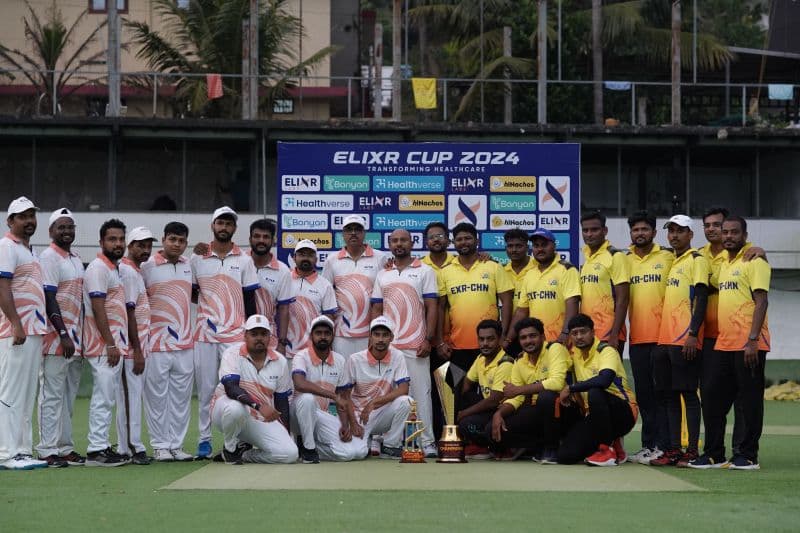
Ever thought about living with diabetes in a remote village, where the nearest doctor is 50 km away and your mobile phone barely loads a webpage? Sadly, this is the harsh reality for many people in rural India.
Meanwhile, some people across the globe are managing the same situation with just a mobile app. Why is India still not there yet?
India is full of different people and is growing fast with technology. But even though we use technology in many areas, we're not using it enough in healthcare. One example is Digital Therapeutics (DTx) — special software that helps treat health problems.
Digital Therapeutics, or DTx, are health software solutions designed to help people manage conditions like diabetes, high blood pressure, and stress. In countries like the U.S., U.K., and Germany, this software has already made a big impact on how people receive quality treatment. Unfortunately, India is still facing many challenges in implementing this technology across large parts of the country.
If we don’t address these issues soon, India risks falling behind in the global healthcare market, missing out on improved patient outcomes, and struggling to meet the growing demand for accessible, tech-driven treatment solutions. Without timely intervention, healthcare technology for rural India will remain out of reach—more of a mystery than a solution for those who need it the most.
The Urban-Rural Divide: A Common Challenge
In big cities, the internet and smartphones are common. But in villages, most people still don’t have them. This gap in technology means rural communities miss out on digital services, including better healthcare options that are only possible with good internet access.
Fixing this problem goes beyond just improving connectivity— it’s about equality and fairness. Digital healthcare in India should reach everyone, regardless of their location. Every Indian should get good healthcare, no matter where they live.
Building Trust in Digital Health Among Patients and Healthcare Providers in India
In India, people are used to meeting doctors in person. They trust their local doctors because they’ve known them for a long time. So, using an app for treatment still feels strange to many people.
Even doctors and nurses aren’t sure about these health apps. Many don’t know how they work or how safe they are. In countries like the U.S. and the U.K., there are strict regulations to ensure health apps are safe and effective. However, India is still behind in setting clear rules and checking the quality and safety of health apps. This makes people even more unsure about using these apps.
The Need for Affordable Access to Digital Health Solutions for All Hospitals
Another problem is that these health apps can be expensive. It costs money to make them, keep them working, and put them into hospitals. Big hospitals in big cities can afford to use these health apps, but smaller hospitals in smaller towns can’t. Without help to pay for it, many hospitals and their patients miss out on these advanced treatments.
Actionable Solutions to Overcome DTx Challenges in India
The problems are big, but they can be solved. If India wants to use Digital Therapeutics the right way, we need to try different solutions at the same time.
- Bridge the Digital Divide
The government should team up with phone and internet providers to ensure cheaper and more reliable services, particularly in villages and small towns. BharatNet and Digital India have laid the foundation, but the next step should be a stronger focus on healthcare technology.
- Build Trust Through Education
For DTx to work in India, people need to trust it. One of the common DTx challenges in India is the lack of awareness and understanding among both patients and healthcare providers. We can build that trust by teaching people about it, sharing real stories, and running programs to explain how it helps.
Hospitals, charities, and new businesses should work together to show that DTx apps don’t replace doctors — they help doctors do their job better. They can share stories of how these apps helped people with diabetes control their sugar levels or how mental health apps gave therapy to people in faraway places.
- Establish Strong Regulations
India needs clear rules for Digital Therapeutics, just like other countries have for medicine. These rules would help doctors trust the apps and make sure patients are safe. By setting clear rules and safety standards, we can help new ideas grow while keeping people safe.
- Incentivize Adoption
To make DTx cheaper, the government can give financial help or work with private companies to bring these apps to public hospitals. Testing the apps in local health centres can show how they can be used in more places.
India has a great opportunity to improve healthcare using Digital Therapeutics (DTx), but there are some issues to address first. We need to ensure that everyone, even in rural areas, has access to the internet and smartphones. We also need to help people trust these health apps by teaching them how they work and showing that they are safe. India also needs clear rules to make sure these apps are good and helpful, just like other countries have.
To make DTx more affordable, the government can help pay for it and work with companies to bring it to hospitals. By doing these things, India can use DTx to help many more people stay healthy. But the real question is: Are we ready to make sure everyone can get this better healthcare?

How I Turned My Biggest Fear into My Greatest Strength

The Secret to Success: Turning Every Step Into a Moment of Happiness

Leaving Stability Behind: How One Bold Decision Created Elixr Labs
